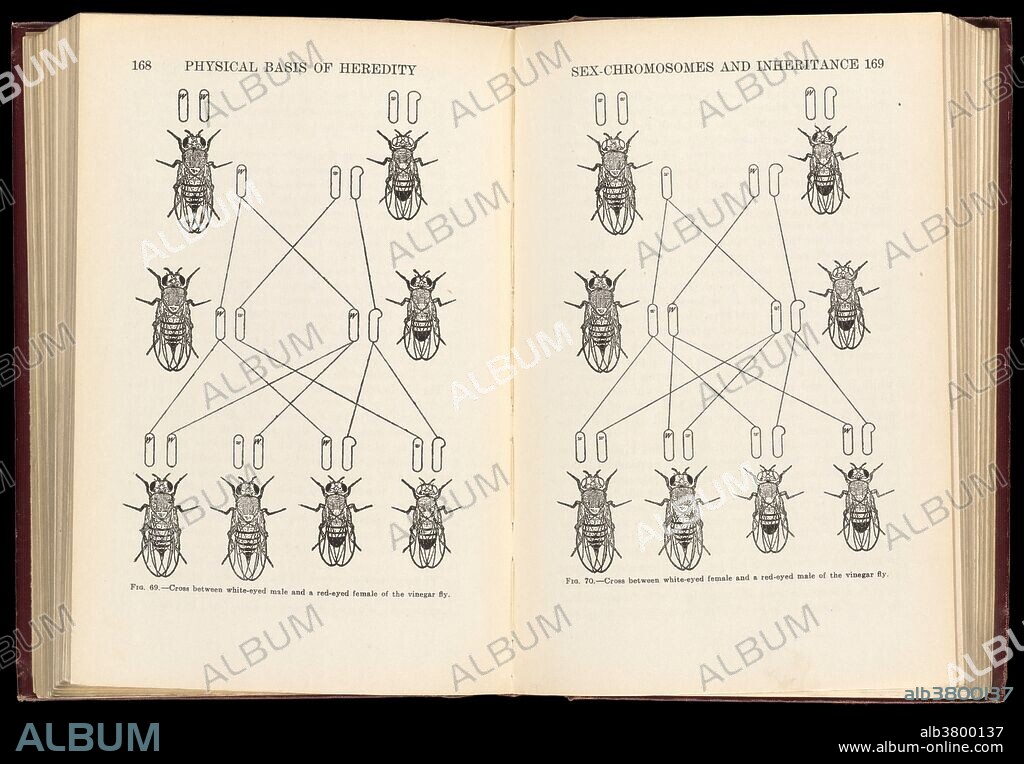alb3800137
Physical Basis of Heredity, T. H. Morgan, 1919

|
Añadir a otro lightbox |
|
Añadir a otro lightbox |



¿Ya tienes cuenta? Iniciar sesión
¿No tienes cuenta? Regístrate
Compra esta imagen.
Selecciona el uso:

Título:
Physical Basis of Heredity, T. H. Morgan, 1919
Descripción:
Ver traducción automática
Cross between white-eyed male and red-eyed female of the vinegar fly. From "The physical basis of heredity" by Thomas Hunt Morgan, 1919. Thomas Hunt Morgan (1866-1945) was the recipient of the 1933 Nobel Prize in Medicine for his discoveries of the role played by chromosomes in heredity. Morgan received his Ph.D. in 1890 at Johns Hopkins University. The work that received the prize was completed over a 17-year period at Columbia University by Morgan and his students, commencing in 1910 with his discovery of the white-eyed mutation in the fruit fly, Drosophila. This led to the discovery of sex-linked inheritance, allowing chromosomes to be identified as the carriers of the hereditary material.
Personas:
Crédito:
Album / Science Source / Wellcome Images
Autorizaciones:
Tamaño imagen:
6376 x 4429 px | 80.8 MB
Tamaño impresión:
54.0 x 37.5 cm | 21.3 x 14.8 in (300 dpi)
Palabras clave:
AMERICA • AMERICANO • AUTOR • BIOLOGIA • CIENCIA • CRUZ • EMBRIOLOGIA • ESTADOS UNIDOS DE AMERICA • ESTADOS UNIDOS • EVOLUCION • FAMOSA • FAMOSO • FIGURA • FISIOLOGIA • GANADOR DEL PREMIO NOBEL • GENETISTA • GENTE • GRAFICO • HISTORIA • HISTORICO • IMPORTANTE • LIBRO • MASCULINO • MEDICINA • MORGAN • MUJER • NOBEL • PAGINA • PERSONA • PERSONALIDAD • PERSONALIDADES • PREMIO NOBEL • S. XX • SIGLO XX • TEXTO • ZOOLOGIA
 Pinterest
Pinterest Twitter
Twitter Facebook
Facebook Copiar enlace
Copiar enlace Email
Email
